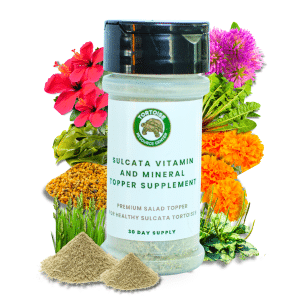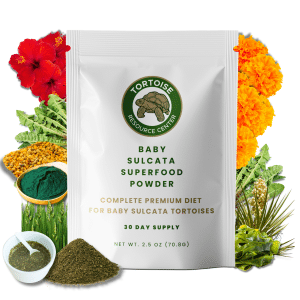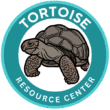Which substrate to use in your tortoise enclosure might seem like a small decision. But remember that this material makes up a huge part of your tortoise’s relatively small world! The right substrate will ensure your Hermann’s tortoise is happy, healthy, and comfortable in its home.
In this guide, I’ll share several of my favorite Hermann’s tortoise substrate options and where to source the highest-quality materials for your pet.
Natural Habitat and Substrate in the Wild
The Hermann’s tortoise (Testudo hermanni) is native to southern Europe. This natural habitat is mostly made up of dry shrublands, meadows, and hillsides. It’s common for Hermann’s tortoises to hang out in rocky areas where they can hide and seek shade in the afternoon sun.
Importance of Substrate for Health and Behavior
Tortoises have an incredibly close relationship with their home environments. As reptiles, they depend on their surroundings to maintain their body temperature and hydration levels. The right substrate makes it much easier for a pet tortoise to regulate its body!
Substrate also equals comfort. Your tortoise spends most (or all) of its time on the floor of its enclosure. You want to choose a material that makes your tortoise feel safe and provides opportunities for digging and burrowing.
Types of Substrate for Hermann’s Tortoises
To the uninformed, it can seem like the only difference between tortoise species is their size. When it comes to choosing substrate, however, species can play a big role in which materials are most appropriate.
In this section, you’ll learn about the most popular substrates available for domestic tortoises and which are best for a Hermann’s tortoise.

Soil and Sand Mixtures
Using soil and sand as tortoise substrate is a controversial subject. While regularly suggested by pet stores, these mixtures aren’t often recommended by more experienced tortoises owners.
I don’t recommend using soil and sand for the entirety of your tortoise’s substrate. These materials can be too rough and dry for constant exposure. Instead, consider using sand and soil as a base layer for more appropriate substrates (like coco coir or orchid bark).
You can certainly make your own mixture using play sand and clean soil (free of chemicals and foreign materials). The easiest option is to purchase a pre-packaged substrate like Zoo Med Reptisoil.
Coconut Coir
This is one of the best substrates for young Hermann’s tortoises. Coconut coir is a dry, fine material made from the husks of coconuts. It allows hatchlings and small juvenile tortoises to burrow without being too rough on their skin and eyes.
One of the great things about coconut coir is that it holds moisture without getting too damp. You can easily adjust the humidity in your tortoise enclosure by misting the coconut coir.
Coconut coir is lightweight and typically sold in dense ‘bricks’. Simply break apart and rehydrate the coconut coir before adding it to your tortoise enclosure. You can also use loose coconut coir, such as Zoo Med Eco-Earth.
In my experience, most brands are pretty much equal. But I do recommend choosing a brand sold for reptiles, such as ReptiCasa.
Aspen Shavings
Aspen shavings are often sold as substrate for various reptile enclosures. Unfortunately, I don’t recommend using aspen shavings to fill your Hermann’s tortoise enclosure.
Aspen shavings are known to cause respiratory issues in some tortoises. The pieces can also easily scratch your tortoise’s eyes.
If aspen shavings can damp, they are very likely to grow mold. This is a recipe for disaster when it comes to keeping your tortoise healthy!
Are You Starving Your Tortoise?
Save 10% on premium tortoise food and supplements from Tortoise Resource Center on Amazon now using code BUYNOWGET10

Sulcata Vitamin & Mineral Topper Supplement
30-Day Supply | 2 oz (56 g)
$24.99

Baby Sulcata Tortoise Superfood Powder
30-Day Supply | 2.5 oz (70.8 g) Bag
$24.99
Orchid Bark
Orchid bark is my go-to substrate for adult Hermann’s tortoises. Many owners use a 50/50 mixture of orchid bark and coconut coir. These materials are very similar and equally safe for pet tortoises.
Orchid bark is typically made from fir bark. This material is light—similar to cork—and gentle on tortoise skin and eyes. Some packaged orchid bark also contains pine, but I highly recommend choosing a substrate made exclusively with fir bark. (Pine bark may emit fumes when placed under a basking lamp.)
While there are tons of brands out there, I’m a fan of Zilla Bark Blend made with 100% organic fir bark.
Combination Substrates
The perfect substrate for your Hermann’s tortoise probably isn’t made up of just one material! Combining multiple materials is a great way to get the benefits of several substrates and create a more natural bedding for your pet tortoise.
For example, it’s very common for owners to use a blend of coconut coir and orchid bark for juvenile and adult tortoises. I also know of many owners who mix clean soil into their prepackaged substrate for improved texture and moisture retention.
Factors to Consider When Choosing Substrate
You have several great materials to choose from. So how do you know which substrate will work best for your Hermann’s tortoise’s needs?
Here are a few factors you should consider when selecting an appropriate substrate.
Moisture retention and humidity
Hermann’s tortoises prefer a humidity level between 40 and 60%. The right substrate can help you maintain and tweak the humidity within the tortoise’s enclosure.
Coconut coir and orchid bark are great for this purpose because they hold moisture and slowly release it into the air. These materials are also unlikely to hold mold or cause other moisture-related issues that can impact tortoise health.
Burrowing and digging behavior
Digging is a very common behavior among Hermann’s tortoises and you want to encourage it within the enclosure. Most tortoises prefer plain soil for digging, though there are some exceptions. Try creating a dedicated burrowing corner filled with soil instead of regular substrate.
Cleanliness and maintenance
A high-quality substrate should only need to be replaced every 6 to 12 months (assuming routine spot cleaning). Coconut coir is one of the longest-lasting materials, as it breaks down very slowly and doesn’t harbor mold. However, the texture of coconut coir tends to be messy.
Orchid bark also lasts a long time and creates less mess than coconut coir thanks to the larger pieces.
Safety and non-toxicity
Most importantly, the substrate you choose must be safe and non-toxic for your pet tortoise. I recommend buying packaged substrates from trusted brands for this reason. Any substrates that you source yourself—for example, soil—must be clean and carefully inspected for foreign objects.
Recommended Substrate Setups
Choosing the right material is, of course, a big deal. But there’s more than one way to utilize substrate in a tortoise enclosure. Two of the most common techniques are layering different types of material and adjusting the amount of substrate throughout the year.
Layering techniques for optimal habitat
I’m a big proponent of layering different substrates to create the ideal environment for your Hermann’s tortoise. Soil is a great base layer. It insulates the bottom of the enclosure and easily adds depth for digging and burrowing behaviors.
Coconut coir and orchid bark can be layered on top of the soil, similar to how you’d mulch a garden bed. These materials regulate humidity better than soil and hold up to wear and tear. You can easily replace sections of the top layer as needed to keep the enclosure clean.
Seasonal adjustments and substrate changes
An experienced tortoise owner may adjust their substrate with the seasons. For example, you might choose a substrate that retains more moisture during the dry season.
If your Hermann’s tortoise hibernates, you’ll want to provide an extra thick layer of substrate for them to safely burrow. This can be the same material you use for the rest of their enclosure.
Citations
Reptile Supply How to Care for Your Hermann’s Tortoise
Star Tortoise Garden Indoor Substrates


